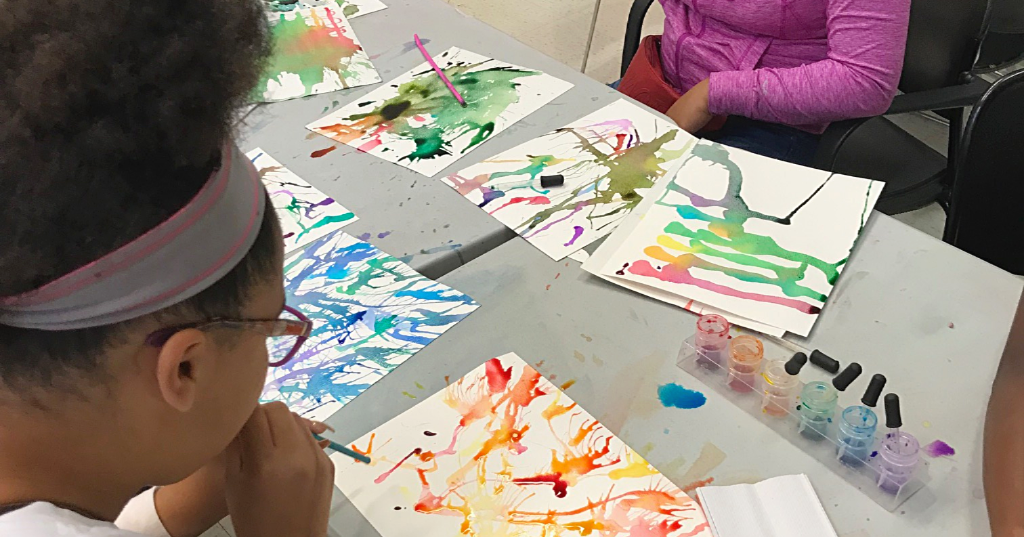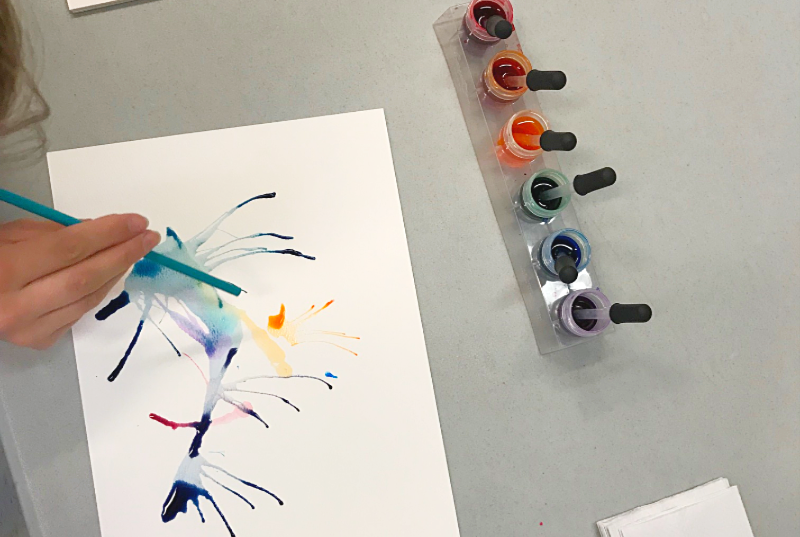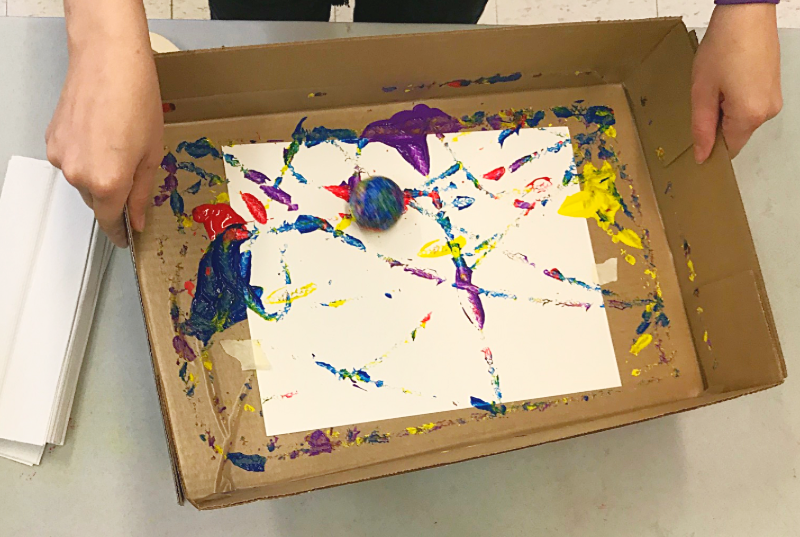 Written by Alder Brannin, Children's Librarian, Main Library
Written by Alder Brannin, Children's Librarian, Main Library
We recently had a blast in the Children’s Library making action paintings! You can try this at home, too, if you don’t mind getting your hands a little dirty.
First, a note about process art:
We love process art in the Children’s Library; it’s a mode of creating art that focuses more on the process of creation than it does on a specific end result. The open-ended, playful character of process art allows children to explore, relax, and experiment, making their own decisions and creating art that is unique. Process art is both fun and a great way to strengthen important developmental skills like fine motor skills, spatial awareness, and decision making.
Each of these STEAM activities (science, technology, engineering, art, and math) allows children to observe how colors blend when different types of force are applied. Kids use experimentation and problem-solving skills to see how the paint reacts to their actions. What if I use every color? What if only use a bit of paint? What if I use a lot? How does the paint react to different application methods? Many kids try each activity again and again to see the different results. We’ve included the supplies and steps for three different activities—enjoy!
 Spin Art
Spin Art
Supplies:
- Small salad spinner (not one you will use for food!)
- Large coffee filter
- Washable paint
- Squirt bottles (optional)
How To:
- Place the coffee filter in the bottom of the salad spinner. Make sure the filter is spread out in the bottom of the spinner.
- Squirt a small amount of paint onto the filter.
- Replace the spinner lid and spin!
- Take off the lid and look at your masterpiece.
Tips:
- It’s fun to notice if you have streaks of paint, or if your colors ended up blending.
- We thinned our paint with water so that it would spread out more easily.
 Straw Painting
Straw Painting
Supplies:
- Watercolor paper
- Liquid watercolors (or other thin paint)
- Eye droppers
- Watercolor paper
- A straw for each painter
How To:
- Drop a few drops of liquid watercolors onto your paper. Don’t use too much, or your paper will get soggy!
- Blow through your straw to spread the paint around the page.
- Continue to add drops and blow them across the page until you are satisfied.
Tips:
- We love liquid watercolors! If you choose to use them, remember that they are often highly concentrated—you can dilute them with water and still get the same vibrant colors.
- If you add too much paint by accident, don’t worry! You can make a copy of your painting by placing another sheet of watercolor paper on top and allowing it to soak up your excess paint. You can also soak up excess paint with a paper towel.
- Try turning your page around and blowing from different angles.
 Golf Ball Painting
Golf Ball Painting
Supplies:
- A box lid or tray
- Watercolor paper
- Washable paint
- Squirt bottles (optional)
- A golf ball
- Masking tape (optional)
How to:
- Place your paper in the center of your box lid or tray. Tape it down lightly if your paper slides around.
- Squirt paint along the edges of your box lid.
- Place the golf ball in the lid. Tilt the box lid to roll the ball through the paint and then over your paper. Keep tilting and rolling until your painting is complete!
Tips:
- We covered the bottom of our box lid with contact paper to make it easier to clean up.
- We tried using a ping pong ball, but the heavier golf ball worked better. You could try using all kinds of things, though, from marbles to toy racecars!

If this looks like fun, come join us! We will be making art all summer long in the Children’s Library as part of Summer Adventure, opens a new window. Keep your eye out for Watercolor Science, Nature Prints, String Painting, and more! Visit our Events Page, opens a new window for a full list.
Art supplies were sponsored by the Downtown Residents’ Council, opens a new window and the Friends of the Public Library, opens a new window.
Written by Alder Brannin, Children's Librarian, Main Library


Add a comment to: Action painting at the Library (and how you can do it at home)